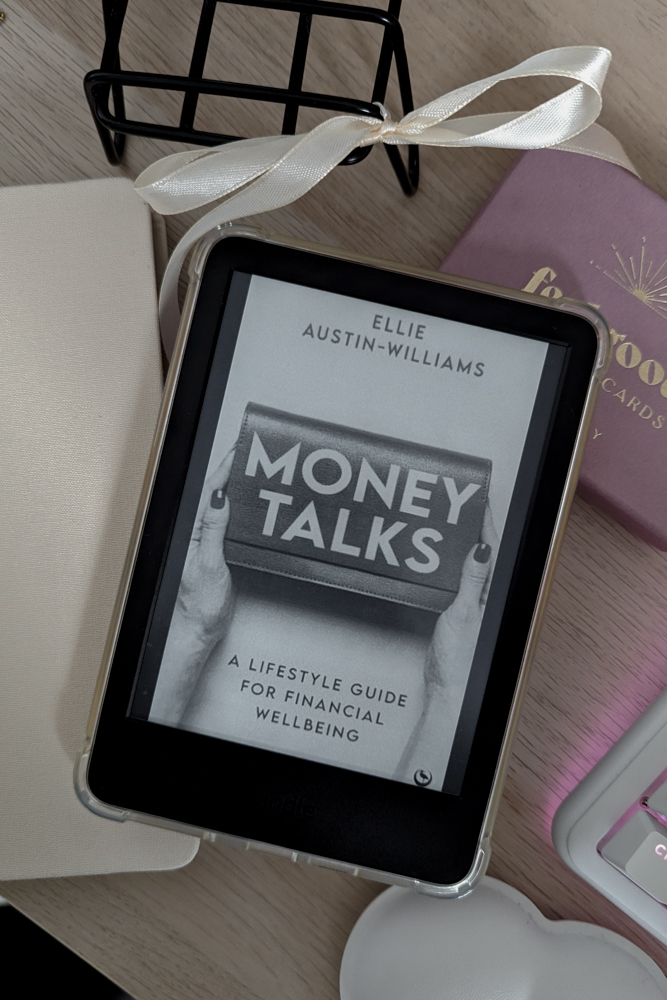Getting Started with Investing
Daisybutter community, we’re in our financial wellness era and today I’m sharing more about investing and my own investing journey so far. I’ve already been open about my money and saving journey, but when I briefly mentioned that investing was one of my highlights of 2023, so many readers reached out wanting to learn more and glean some friendly advice.
Investing is a long-term way of building wealth. From the stock market to luxury handbags, owning property to savings, there are many ways to get stuck in and, since home ownership isn’t accessible to all, investing in stocks is what I chose to tackle early last year. (I could sell one of my luxury bags for 5x what I paid, and this often feels like my wildest ‘investment’! This is a great little way to consider investing – think about what you put vs. what you’re getting back.) Plus, once you get started, you quickly understand that people talking about pricey fast-fashion items as ‘investment pieces’ are talking a load of trash.
For starters, I really wish that I’d started doing this sooner! I knew that I wanted to make my money work harder a while ago, but it wasn’t until I’d consolidated my current and savings bank accounts that I seriously considered it and began my research. And, boy, this stuff isn’t for the faint-hearted! Investing, of course, comes with risks and you should keep this at the forefront of your mind. So, let’s talk about investing into stocks and shares, how to do it and all of the other ins and outs…


What are you investing for?
First, I think it’s important to consider what you’re investing for. Investing is usually a long-term, um, investment, and it tends to take months and years to start seeing an ROI (return on investment). So, if you’re wanting to save for retirement or for a big family trip in 10 years, it’s great. Want to grow your funds for a holiday next year? Perhaps consider maximising your savings situation. It’s also not set in stone, so this is worth bearing in mind: you’re not guaranteed any set return.
Research, research, research
Research is key when taking any leap that involves your hard-earned cash. What I mean by research is mostly to keep your finger on the pulse and check up on what big brands and companies are doing. Are Apple consistently reporting profits? Have Netflix announced another risky subscription tier? Notice what companies are doing and whether there are any small trends. Start making note of the brands you personally support too: can you invest in these?
How much to invest
I think it’s difficult for me to start throwing out numbers, since we all have varying perspectives of how much is ‘a lot’ or ‘not enough’. Yet I suppose this also wouldn’t be a useful post without sharing my own lived experience – that’s why you’re here rather than on a generic money website, right? Personally, I began my investing journey with £500. Instead of popping that in my bog-standard savings account, I funded my trading account with it. You can invest from as little as £10 on some platforms, but many shares are a little more costly than this. £500 is a comfy amount and, almost a year on, I’d absolutely recommend this as a good starting sum.
Where and how to start investing
There are many options out there for beginner investors, but I’m going to focus on the two that I know and personally use: a Stocks & Shares ISA, and Trading 212. Oh, and always take note of any fees. Even 1-2% fees can eat into your investments over time.
The former is far more simple and straightforward. My own Stocks & Shares ISA is with MoneyBox, and they make it incredibly easy to get going with investing. Simply open an account with as little as £1 in your account, set a weekly deposit and then select a risk tier (low, medium or high-risk), and let the bank do the rest for you. MoneyBox (or whichever bank you opt for) will then invest your money for you, choosing the best stocks for your goals. My own account has ‘given me’ a +40% ROI since I opened it in 2018.
The latter is an investing platform. Trading 212 is great because it allows you to buy fractional shares – if you can’t afford to buy one stock for £200, but you can spare £50, you can buy ~0.25 of a share and slowly build your investment from there. They have a huge range of stocks and, better yet, a big selection of ETFs. To get started, open an account and fund it with some cash.
Join Trading 212 with my referral link and we’ll both receive £100 worth of shares to trade.
Choosing your investments
Next up, choosing what to invest in. Again, I’d recommend starting small here and that’s with exchange-traded funds (ETFs). ETFs consist of smaller shares from lots of different companies and household names, so they’re naturally diversified, making them lower risk. It keeps your fees low and they can sit in your portfolio, slowly accumulating wealth. Take some time to search a few ETFs and decide whether they’re right for you.
I also invest ethically, as much as I can, meaning that I try to only buy stocks from companies that are sustainable or that I believe are doing good. When you’re more experienced, it’s a great guideline to be investing in companies that align with your own lifestyle, ethics and morals. Right now, that means a few ETFs, renewable energy, and EV networks. And certainly no Amazon! (Sorry to my Kindle obsession.)
I would also recommend considering some value stocks, alongside ETFs and the more trendy stocks. (I know at least some of you are considering Apple, TESLA and Netflix!) Value stocks are the dependable stocks that have already withstood the test of time. Think pensions, retirement home builders, and other companies that are the backbone of society. Legal & General and Vanguard are good starters here.
Growing your portfolio
I’ve probably already scrambled your brain by now, so I’ll round off this starter guide to investing with some notes on growing your portfolio. Start small and safe, and leave your shiny new investments ticking over for at least a few weeks before regularly checking in on them. I probably check mine once a month? I say this because stocks and shares do go up and down a lot. It might be a shock to see things in the red, since your regular savings account would never do this to you! But, after a few months, you should begin to start seeing some trends and feeling more comfortable about what your investments are doing. Buy when stocks are low and hold on to those shares. Consider treating your investments portfolio like a savings one and make it a non-negotiable: you could transfer just £50 each payday into it, for instance.
Further reading and resources
- Missed my post about saving? Read it here.
- The Lazy Girl’s Guide to Investing in the Stock Market by The Everygirl
- Female Invest
- Girls That Invest
Money and finance aren’t taboo topics. My girlfriends and I have been openly discussing investing for the past few months and it’s been so empowering to learn from each other, help one another out and step into our finance girlie eras. As we continue to weather the Cost of Living storm and ride out this wild inflation, it’s more important than ever to have a real grasp on our finances. Investments and getting serious about saving are both excellent steps to building your wealth.
Stay tuned for the next post in this 2024 mini series, where I capture a week of spending in another Money Diary.






